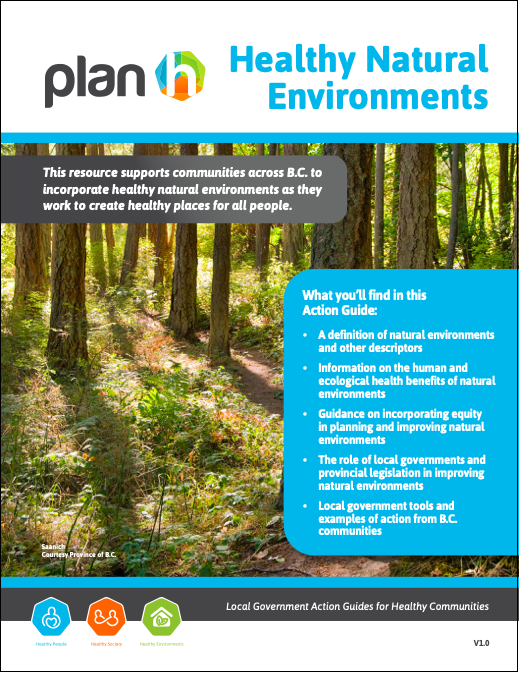Healthy Natural Spaces
Description
Resilient communities rely on a healthy natural environment that provides robust ecosystem services (like clean water, rainwater drainage, or wild and foraged foods) and maintains ecosystem balance, biodiversity, and environmental quality. Community members can enjoy the benefits of nature and have equal access to safe and natural/green public spaces for leisure, exercise, culture, and subsistence, regardless of socio-economic status or other factors. Community members are not exposed to excessive light, noise, smell, toxins, fumes, odours, or other forms of waste or pollution in or near their residence.
Share this Subissue on:LinkedIn
Resources
Green spaces aren't just for nature - they boost our mental health too
There is very strong evidence to support the positive effects that nature has on physical and mental health, as well as how it boosts aspects of thinking, attention, memory, and creativity. This article highlights the links between wellness and exposure to nature, and particularly for those living in highly developed urban spaces. It explains the specific positive effects that green spaces have on individuals, and may help you to better understand and identify opportunities for advancing the health of your workers and the people in the communities in which you operate.
Plan H - Healthy Natural Environments
This action guide can help you to understand how national environments and health benefits are interconnected, as well as ways for you to support the development of such space. The guide provides a definition of natural environments; explains the role of natural environments in human health and wellbeing; explains the role of local governments and legislation in improving natural environments; and provides examples of local government tools and examples of action from British Columbian communities.
Although this resource is specifically related to the B.C. context, the definitions it includes and the opportunities for engagement that it highlights are applicable to a broad range of natural environments.
Green and Blue Spaces and Mental Health
This report from the World Health Organisation summarises recent research on how natural spaces benefit mental health, and specifically in the context of climate adaptation. Although it is geared toward policy makers and researchers, sections 4-6 do a good job of explaining the health benefits of green and blue spaces and outlining the types of natural spaces that have the greatest positive impacts on mental health. These insights will be especially useful to businesses developing physical infrastructure, such as operational sites, office sites, or other real estate development. This resource would be most relevant to engineering, EHS, and project management or planning teams.
A Playbook for Nature-Positive Infrastructure Development
Infrastructure is one of the main drivers of biodiversity loss. This detailed guide from the International Federation of Consulting Engineers and WWF can help you address this issue by applying nature-based solutions (NbS) to infrastructure design and development. It emphasises the importance of moving beyond environmental impact mitigation to creating nature-positive infrastructure that provides a net gain in biodiversity and ecosystem integrity. The guide summarises the range of NbS that apply to different sectors and subsectors and explains the benefits and co-benefits of NbS towards; outlines how they can be measured to promote their adoption; and takes a closer look at thirteen different sample solutions. This practical resource will be most useful to engineers, project developers, and sustainability practitioners.



